To Index Home Page
To View The Images:
Click
IMAGES ONLY
Then use your mouse
with the slider on the right of this frame
to view the 40 + images.
And See All The Images:
Click
FULL TUTORIAL

Origins in Prehistory...
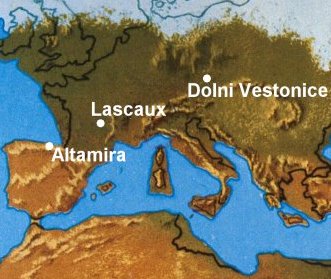
Part of the Northern Hemisphere about 30,000 years ago when the glaciers of the last Great Ice Age were receding northwards. It was during this time that some of our Stone Age ancestors made life-like animal images in paint and clay on rough rock walls deep inside limestone caverns. Baked clay figurines from the Stone Age have also been found in Eastern Europe.

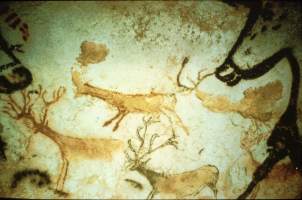
Probably the most famous prehistoric animal paintings are those discovered in the Caves of Lascaux in SW.France. The vast number of animal images at Lascaux are thought to have been painted around 30,000 years ago, probably intermittently and by many painters spanning generations.

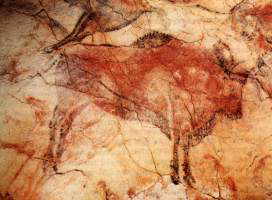
Later Old Stone Age animal painting, a bison.
One of many on the roof of a cavern at Altimira NW.Spain. Thought to have been painted perhaps as late as 15,000 BC.

THE EARLIEST CLAY IMAGES
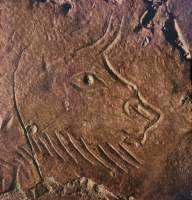
The head of a bison scratched in clay mud, smeared on a cavern wall. Thought to date from about 15,000 BC. - S.W.France.

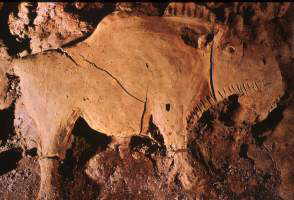
A Stone Age clay image of a bison modelled in high relief out of a great outcrop of clay in the Tuc d' Audoubert cavern in S.W. France. Thought to be made about 15,000 BC.

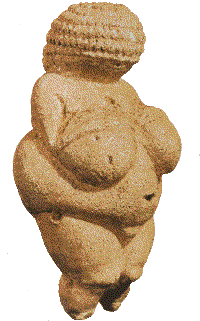
A tiny bulbous Stone Age figurine 4.3" high. carved in limestone. It is almost certainly a female fertility object of some sort and in more naturalistic style than most so far found. Discovered near the village of Willendorf in Lower Austria and made probably over 20,000 years ago.

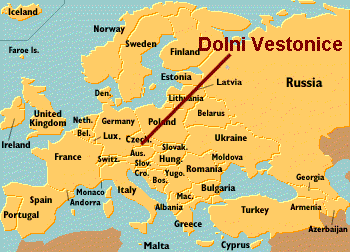
Map showing the rough location of Dolni Vestonice, near Brno, Moravia in the Czech Republic. Here there was a great mammoth hunters camp in the Stone Age. A Stone Age kiln and ceramic figurines were also discovered on the site.

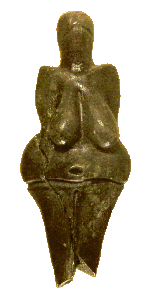
Made of clay and bone ash, this is the tiny baked clay figurine is known as the "Venus" of Dolni Vestonice. It is thought to be about 29,000 years old and have been fired in a beehive shaped kiln in this Stone Age village. It was amongst thousands of other small fragments found at this Czech prehistoric site indicated on the previous map.

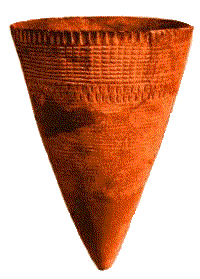
The Earliest period of Japanese Pottery - An example of Jomon ware, possibly 10,500 BC.?

An Outline Map of Western Asia Today
(also called the Middle East).
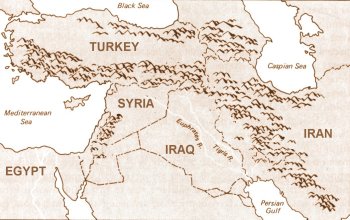
The Map Below: This Shows Some Ancient Sites Mentioned In The Tutorial.
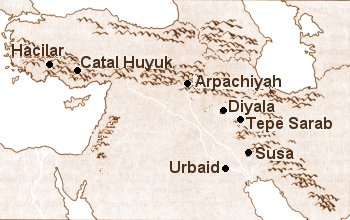

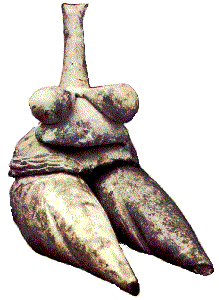 .
.
Fired clay figurine about 2.5 inches high. Made about 7000 BC. from Tepe Sarab a prehistoric village site in Western Iran.

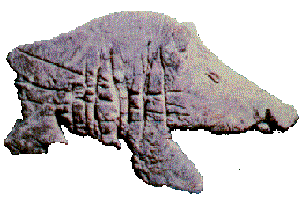
This tiny fired clay image of a wild boar c.7000 BC. was also from Tepe Sarab in Iran

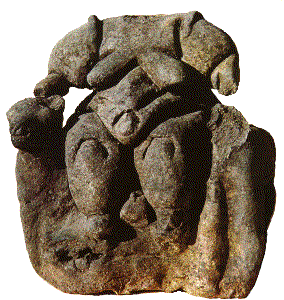
Enthroned goddess in baked clay. c.5500 BC. Possibly giving birth. Two leopard-like heads on either side. - Çatal Hüyük - Anatolia Turkey.

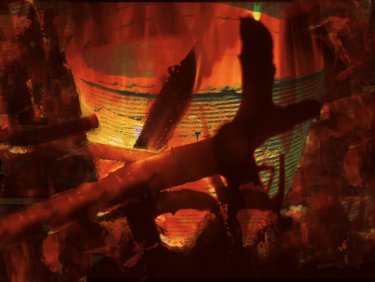
THIS IS THE REAL BEGINNING OF CERAMICS...
Making Clay Objects Permanent - by roasting them in a bonfire. Today it seem almost certain that by around 30,000 years ago some groups of our Stone Age ancestors had understood the principle of making a clay object permanent by heating it in a bonfire. However, it seems to have taken thousands of years more for ceramics to become common in prehistoric cultures. Only after 7000 BC can we begin to trace evidence of a continuous pottery making tradition. That story appears to begin in western Asia - Turkey, Iran, Iraq, Syria and Palestine.

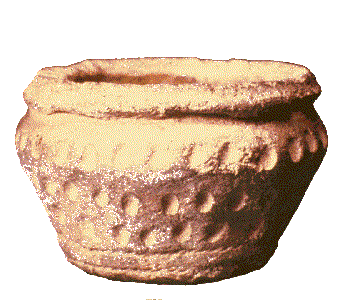
A typical tiny prehistoric pot pressed out of a small lump of clay with the thumb and shaped in the palm of one hand with the fingers of the other hand. Decorated with just a row of finger marks round the sides.

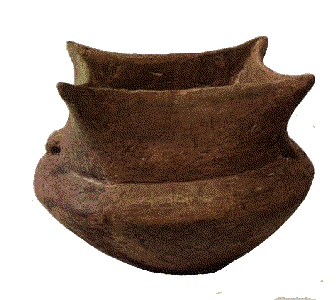
Another tiny thumb pot but with a more sophisticated shape. Probably for ritual use, it has holes for hanging and four beak spouts. From a neolithic "shrine" in Liguria, NW Italy.

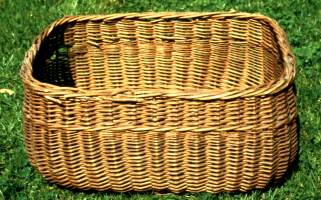
Basket-making and many other weaving crafts developed rapidly in these prehistoric villages.

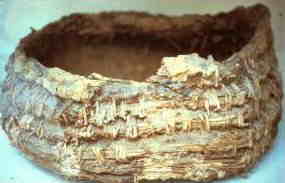
The remains of a basket from about 4000 BC. found in the mud of the river Nile.

These illustrations demonstrate the way that basket-making probably influenced the development of pottery-making.
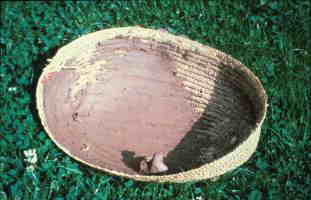
(1)Waterproofing a basket to store water or carry it from a river to the village

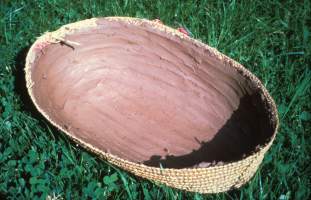
(2)Waterproofing a basket to store water or carry it from a river to the village

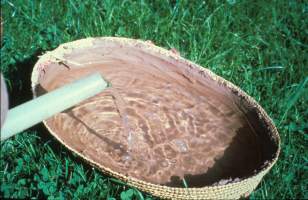
(3)Waterproofing a basket to store water or carry it from a river to the village

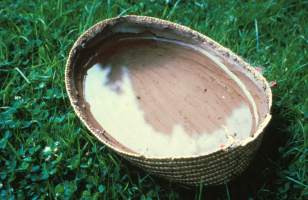
(4)Waterproofing a basket to store water or carry it from a river to the village

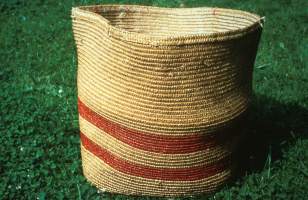
It is probable that larger baskets used to store grain and other food were lined with clay to store water

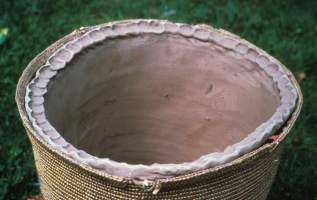
It may be that in some communities the first large pots were made this way

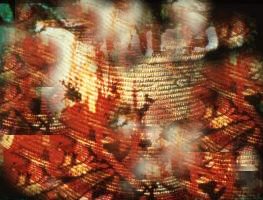
Serious fires must have destroyed huts, even villages on occasion. The discovery that clay lined baskets became hard rot proof pots after such a conflagration must have been one of the few benefits of such a calamity. It would nevertheless have been a very valuable discovery.

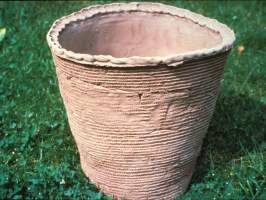
Making pots by using a basket for support inevitably produced pots with a press-decorated basket pattern on the outside.

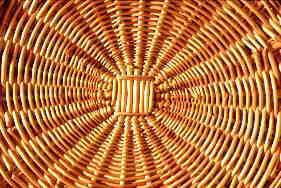
Basket-making seemed to have influenced the early development of pottery in virtually every prehistoric pottery-making culture all over the world. Whether it is in Western Asia, the Far East, Central America or Europe, the powerful influence of this earlier craft is evident in making and decorating techniques of much early pottery.

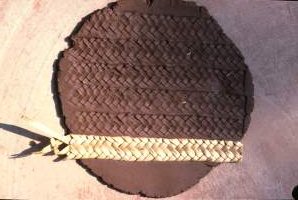
The simple techniques developed to make basket patterned pots flourished in most of these cultures. These two photographs illustrate a couple of simple ways of achieving such effects. (1) A strip off the rim edging of a basket, lightly pressed into the clay in rows or bands. Stamps were made out of clay which were then fired. These were widely used in the Far east.

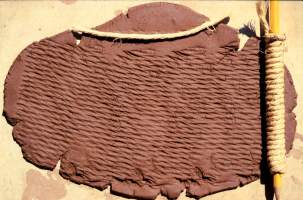
(2) A piece of string wrapped around a pencil which is rolled across the piece of clay or round the outside of the pot with the palm of the hand

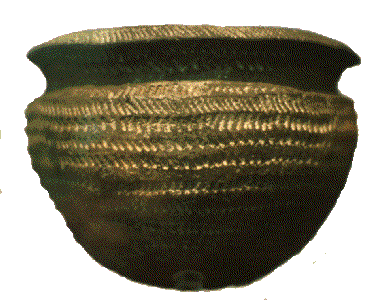
This little pot from a prehistoric grave in Britain is decorated with an indented rope pattern made by simply using a small stick or bone to give the patterned look of basket work. It's not difficult to imagine that a coiled rope basket inspired this decoration.

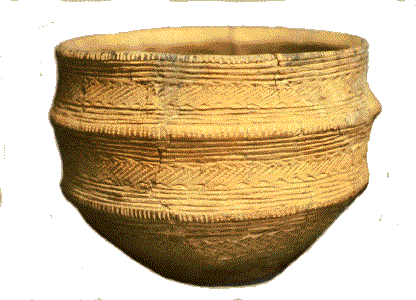
Also from prehistoric Britain but this one has a more daring shape and is stick decorated with a complex series of marks and scratches which results in a very beautiful design. A band of scratched diagonal lines alternates with raised rings. This intricate pattern is surely intended to imitate sewn ribbing.

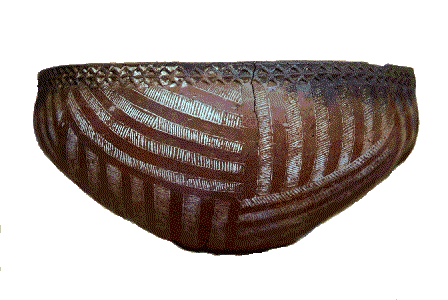
Prehistoric Egyptian small coiled bowl about 5 inches dia. Scratch and stamp decorated and then inlaid with contrasting slip or whiting. Scraped clean and fired c. 4000 BC. Influence of basket making techniques.

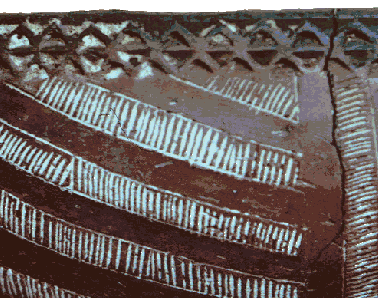
Egyptian edge stamped bowl - detail. Notice that the white filling has fallen out of much of the stamp edging.

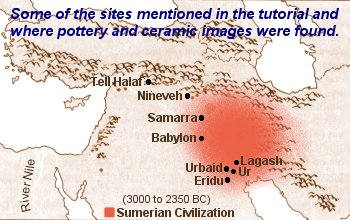
Map of Western Asia (also called the Middle East). It shows the approximate position of places mentioned in the text.

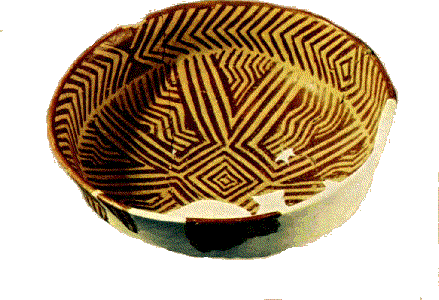
A bold basket decoration brushed on using red and white slip. A small food bowl from Hacilar in western Turkey c.5000 BC.


Part of a collection of shards from this early period in Western Asia showing the brush strokes and incised marks immitating basket patterns.

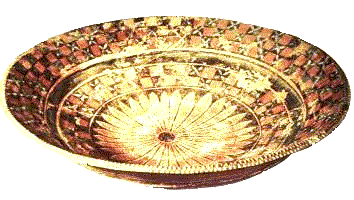
Halfa type dish found at Arpachiyah North Iraq c.5000 BC.

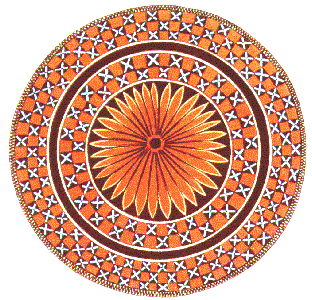
Colour drawing reconstruction of the dish found at Arpachiyah in North Iraq. This shows more clearly the crisp geometric brushwork patterns all derived from basketwork designs. Notice the hatching lines around the edging. Almost certainly this imitates the basket makers edge binding.


Brush decorated Late Urbaid plate from Ur grave site c.4000 BC. These curving and tapering strokes in dark brown slip show that the use of brushes encouraged the painters to move away from hard straight lines and sharp geometric shapes. This pattern of crescent moon shapes was brush inspired.

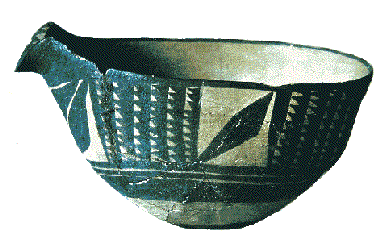
The dark slip patterns painted on this spouted pot shows more evidence of this new freedom to explore brush techniques.

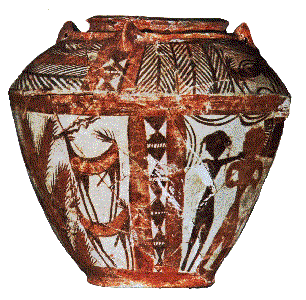
A pottery jar decorated with complex designs in red slip. Made about 3100 BC. in the Divala valley in Mesopotamia The images include deer-like creatures and part-human figures. The symbolism in such designs is unfortunately incomprehensible to us. However, we can appreciate the advances in ideas and technique.

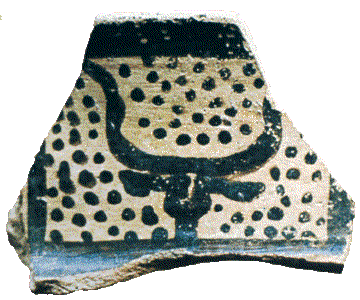
A pottery fragment or shard with brush painting c.5000 BC. It shows a bull's head simply and boldly drawn in dark clay slip on a lighter body. Although a simple design, the subtle brush strokes enable a very lively characteristic bull-like image: curved horns, flapping ears and soft but blocklike head.

Simple Drawings representing a bull's head.
They are based on brush drawings on Mesopotamian pottery of the 4thMillenniumm BC.

and illustrate the gradual changes in the way this idea was painted on a pot as the centuries passed.

In the last two examples bull's heads have been joined and abstracted into continuous decorative bands around a pot.

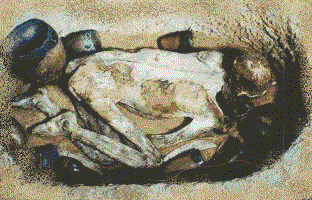
A reconstruction of an ancient Pre-dynastic Egyptian grave c.4000 BC. It shows red and black decorated pottery vessels. These offerings would have contained food to sustain the dead man in the next world.

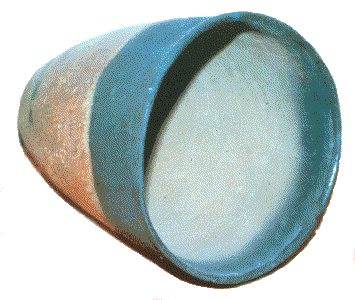
A typical ancient Egyptian black banded funerary pot. The black banding and strong red body colour probably had a symbolic meaning though it is lost to us today.

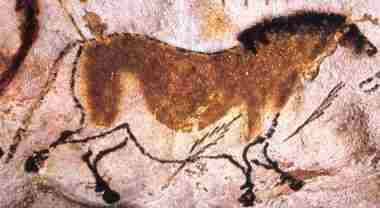
Caves of Lascaux: Showing feathered spears or arrows around a male horse.

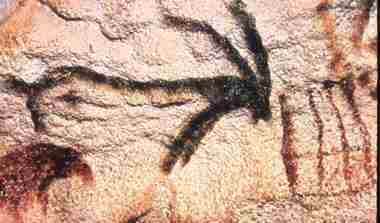
Caves of Lascaux: Female Ibex? The unfinished outline of a "chequered flag" in front of her.

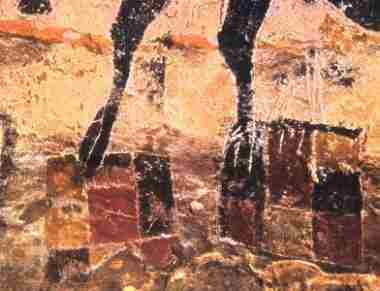
Caves of Lascaux: Legs of Female Cow standing on "coloured flags"

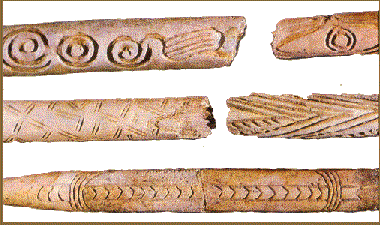
Tiny Stone Age bone tools: Decorated with patterns which are thought to be symbols.

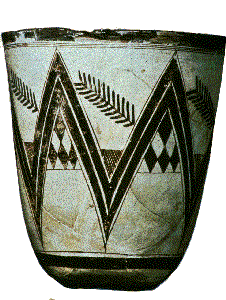
A decorated beaker from the prehistoric site at Susa, Western Iran. Made about 4000 BC. The walls are extremely thin and painted designs delicate and refined. There can be little doubt that the complex patterns have an ancient prehistoric symbolism, but it's full meaning is lost to us today.

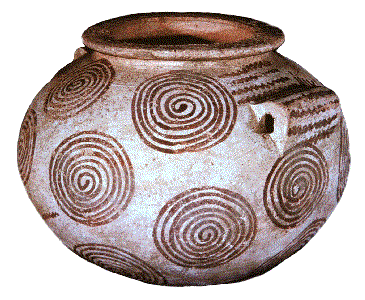
A Pre-dynastic Egyptian Grave Pot. c. 3500 BC. The spiral decoration is widespread and a significant symbol.

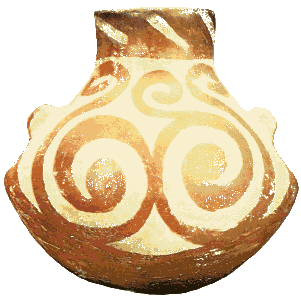
From Hacilar in Western Turkey. A small globular pot with a neck and two small lugs. The dark red-brown slip painting and especially the double spiral may represent a human female figure. The spiral symbol is often associated with the breast, milk and drink.

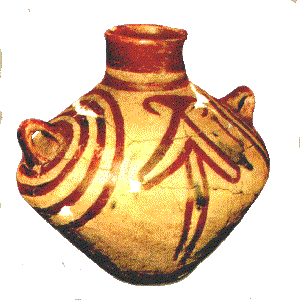
Another ovoid pot with lugs also from Hacilar c.5200 BC. What is the imagery and symbolism here? The cream and red slip painting almost turns the pot into a female figurine. A spiralling line around the lugs may represent breasts. Also, the simple outline drawing of a figure appears to have long pendulous breasts.

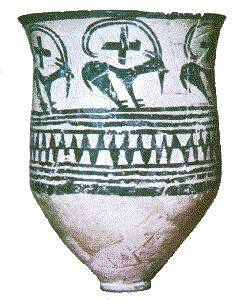
A small beaker from Sialk in Western Iran made about 4000 BC. The body and the style of decoration are similar to the pottery made elsewhere in Western Iran. Although not as sophisticated as the Susa pottery there is a lively spirited quality in the painting of the bearded goats with their enormous curved horns - and the upturned feet skidding to a halt!

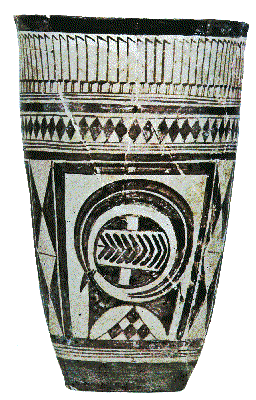
Early 4th millennium BC. Beaker from the ancient prehistoric village of Susa. in South-western Iran. One of the most elegant designs in all prehistoric pottery. The decoration around the rim shows long-necked wader birds in a formalised, abstract design. The central figure is a stylised ibex. The whole design is framed top and bottom by a series of dark bands of different thicknesses.

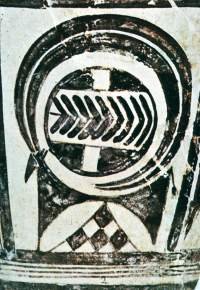
A detail of the Susa beaker showing the central figure, a stylised ibex with enormous curving horns which enclose a complex symbol or medallion.

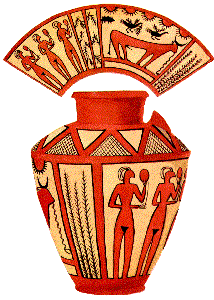
Reconstruction drawings of a jar with lugs, decorated with cream and blackish slip from the Diyala valley in southern Iraq c.3000 BC. There are drawings of animals, birds and human-like figures.Undoubtedly the is much symbolic meaning in all of these.

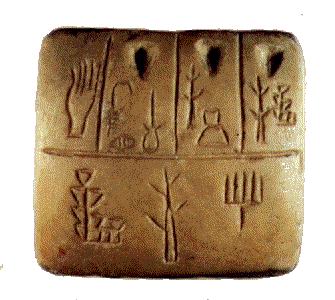
Mesopotamian clay tablet(1) c.3200 BC. One of the earliest examples of pictographic writing scratched on clay. It was then baked and kept as a permanent record.Archaeologists believe this tablet included proper names in pictographic form.

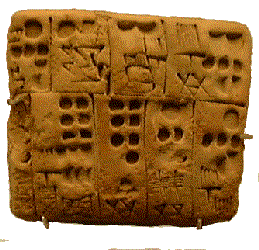
Mesopotamian clay tablet(2) c.3000 BC. A list of accounts involving animals, bread and beer.

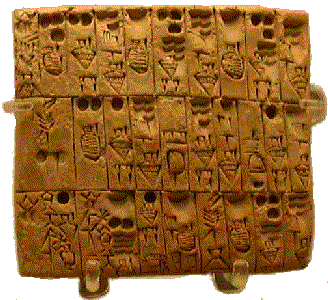
Mesopotamian clay tablet(3) c.3000 BC. Scratched on this is a list of commodities: different types of metal containers.
This is the last illustration.
I hope you have found tutorial No.1 interesting and perhaps useful.
Tutorial No.2 covers the invention of the wheel.

That was the last illustration in this tutorial

Last modified on 28th May 2001
©2000 Victor Bryant
To Index Home Page